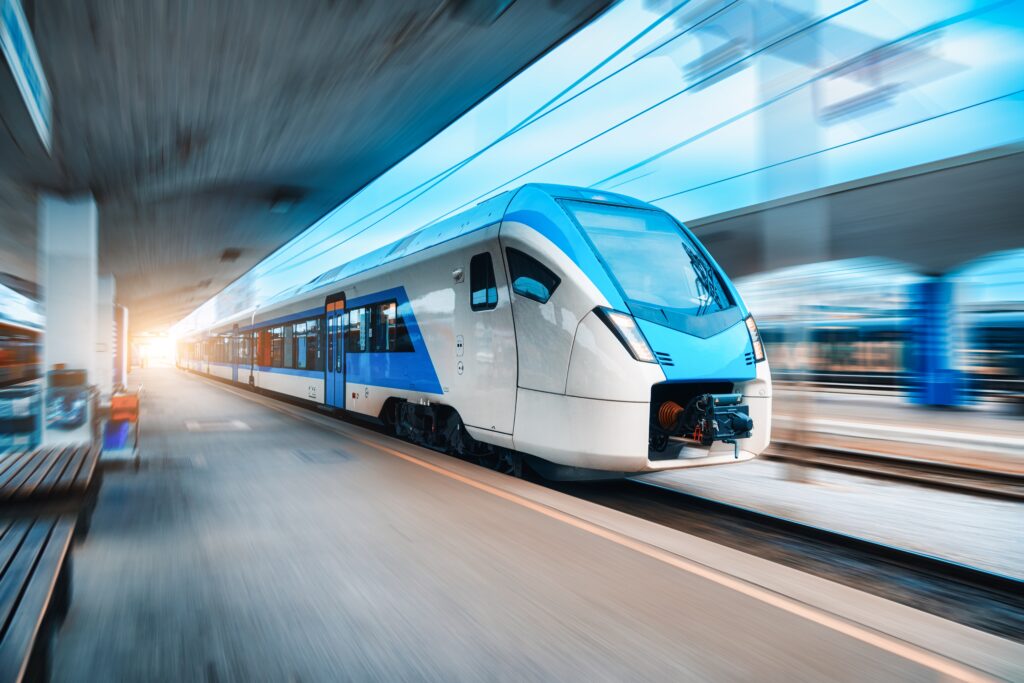The United States, with a population of over 340 million people, boasts an extensive infrastructure network, including 71 interstate highways and more than 5,000 public airports. Yet, despite this, the country still lacks a fully operational high-speed rail (HSR) system. Currently, only two HSR projects are under active construction, while additional proposals are still in development. The slow pace of progress raises questions about the future of high-speed rail in the U.S. and whether it will ever catch up to its global counterparts.
Progress So Far: HSR Projects in the U.S.
The U.S. is taking its first steps toward high-speed rail, with two major projects underway. One of the most ambitious is the California High-Speed Rail, which will connect San Francisco and Los Angeles. The project faces challenges, including California’s mountainous terrain, which makes construction particularly difficult. The second project, Brightline West, aims to link Las Vegas and Los Angeles, benefiting from a flatter route that should make construction easier and faster.
Additional plans for HSR routes include a line connecting Portland, Oregon to Vancouver, Canada, and another connecting Dallas and Houston. However, experts like Rick Harnish from the High Speed Rail Alliance caution that progress is slow. The Portland-Seattle-Vancouver project has faced delays, while the Texas project saw setbacks when the Trump administration pulled a crucial $63.9 million federal grant.
The Global Race: China’s Rapid Expansion
While the U.S. hesitates, China is surging ahead with its high-speed rail ambitions. The country is set to operate over 50,000 kilometers of HSR lines this year and aims to reach 60,000 kilometers by 2030. China’s rapid expansion of its rail system has not only transformed domestic travel but also helped strengthen its influence in neighboring countries. China has built or is in the process of building rail systems in nations like Indonesia, Malaysia, Thailand, and Vietnam. According to 21st Europe, a Denmark-based think tank, cities with HSR systems see an economic boost of 14.2%.
In Europe, high-speed rail networks are similarly expanding. Spain leads with 3,190 kilometers of HSR lines, and countries like France and Germany are continuing to develop and connect major cities. The UK, while only operating a single high-speed line, is building High Speed 2 (HS2) between London and Birmingham, despite financial challenges.
Challenges in the U.S.: Cultural and Political Barriers
Why is high-speed rail moving so slowly in the U.S.? A significant factor is the country’s car-centric culture. Will Doig, a journalist and rail expert, notes that many Americans are skeptical of public transportation, particularly when it involves projects near their homes. Additionally, rail projects often face opposition from local governments and lawmakers who abandon investments prematurely. Leadership changes in federal agencies have further complicated progress. For instance, Amtrak’s CEO Stephen Gardner resigned under pressure from the White House, leaving the state-run rail operator without a clear direction for HSR.
Amtrak, which does not currently operate high-speed trains, is working to introduce new, faster trains. The company is set to roll out 28 NextGen Acela trains, which can reach speeds of 160 mph. However, only 50 miles of the Boston-to-Washington corridor can support speeds above 150 mph, making it a limited solution.
Infrastructure and Investment Gaps
For high-speed rail to succeed in the U.S., experts agree that significant investment and federal support are necessary. In contrast to China and Europe, where rail systems are prioritized, the U.S. has failed to build a cohesive national vision for public transportation. Harnish points out that safe HSR requires dedicated, straight tracks with no road crossings, and building these routes often requires significant upfront investment.
The U.S. federal government has provided some support for high-speed rail, but recent decisions, like the cancellation of funding for the Texas line, raise doubts about long-term commitment. Transportation Secretary Sean Duffy called the Texas project a misuse of taxpayer funds, underscoring the lack of political will to support these initiatives.
As the U.S. continues to debate the future of high-speed rail, questions remain about whether the country will ever fully embrace the technology. In Europe, the push for HSR connects not only major cities but also fosters economic growth. Kaave Pour, an expert from 21st Europe, argues that the U.S. needs to adopt a similar mindset and prioritize investment in public transit.
For now, the U.S. lags behind its global peers in high-speed rail development. Alstom executive Scott Sherin, whose company supplies Amtrak’s new trains, expresses doubt that American leaders will muster the political courage to invest in rail over other forms of transportation, such as highways and air travel. He notes that building HSR in dense urban areas like Dallas and Houston presents major logistical obstacles.
Despite these challenges, the push for high-speed rail in the U.S. continues. Proponents argue that it’s not just about faster travel, but about modernizing transportation infrastructure to meet future needs. However, without federal backing and political will, the U.S. risks falling further behind in the race for high-speed rail.
The U.S. has made some progress in developing high-speed rail, but much work remains to be done. While China and Europe are setting the pace, the U.S. faces significant cultural and political barriers that slow its progress. For high-speed rail to become a reality in the U.S., it will require not only technological innovation but also a shift in mindset towards public transportation and long-term infrastructure investment.
